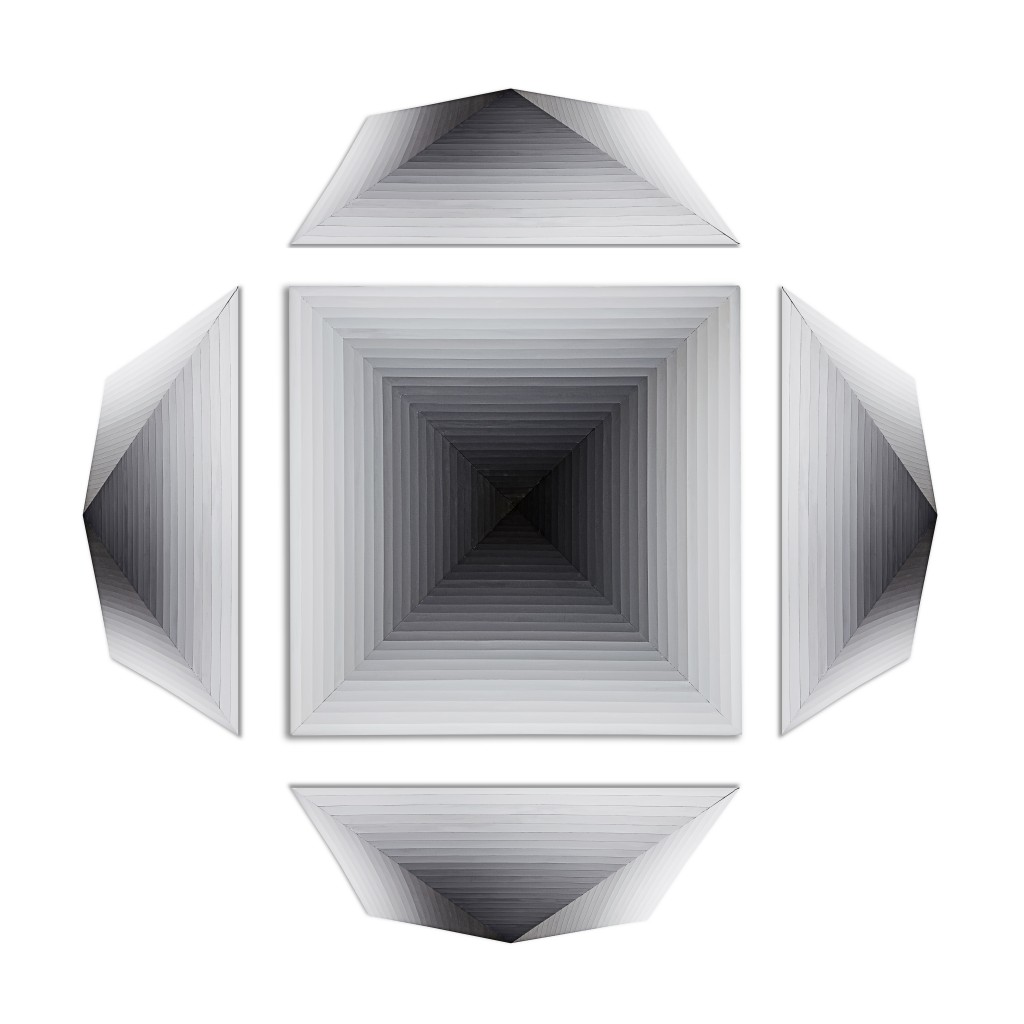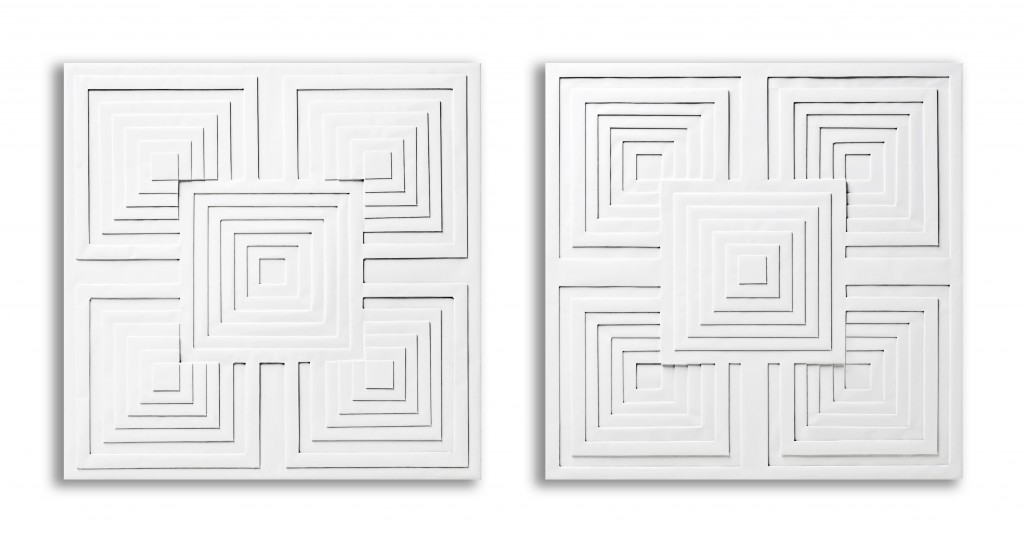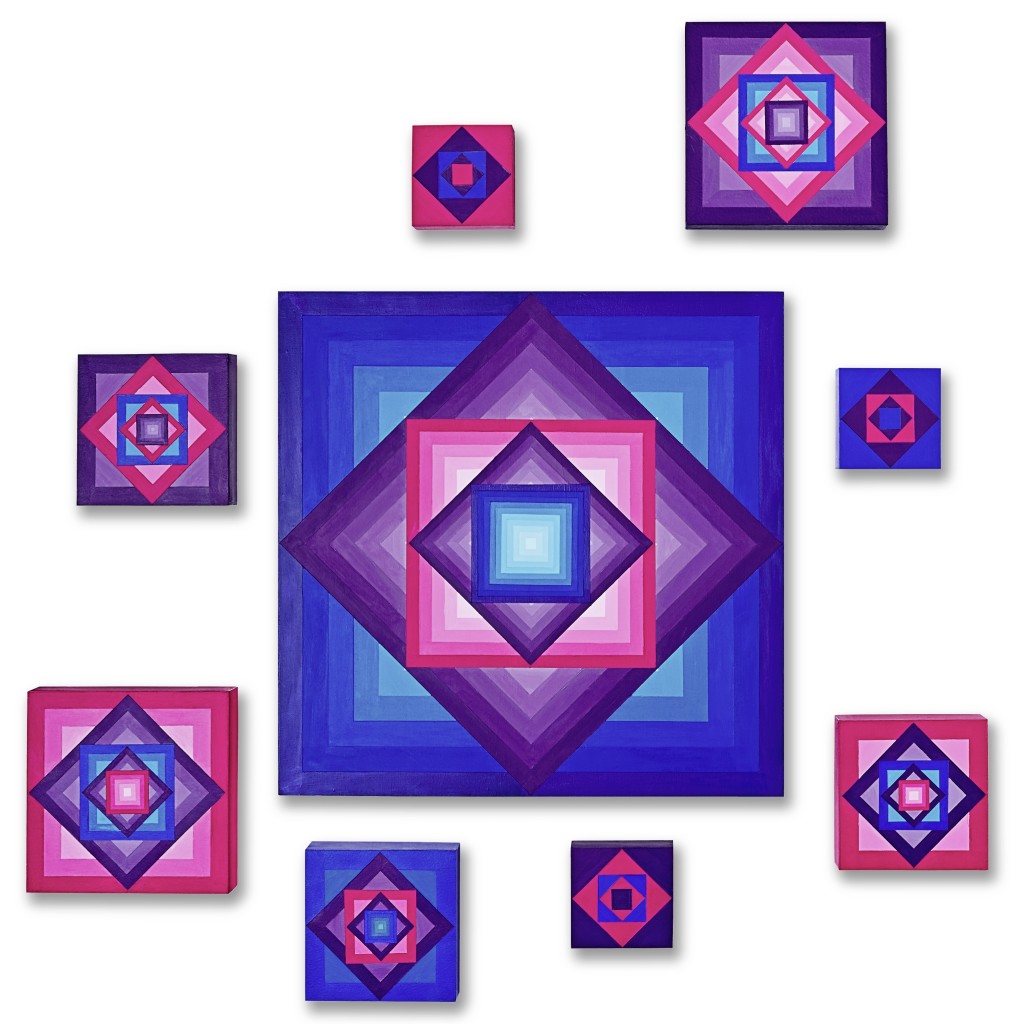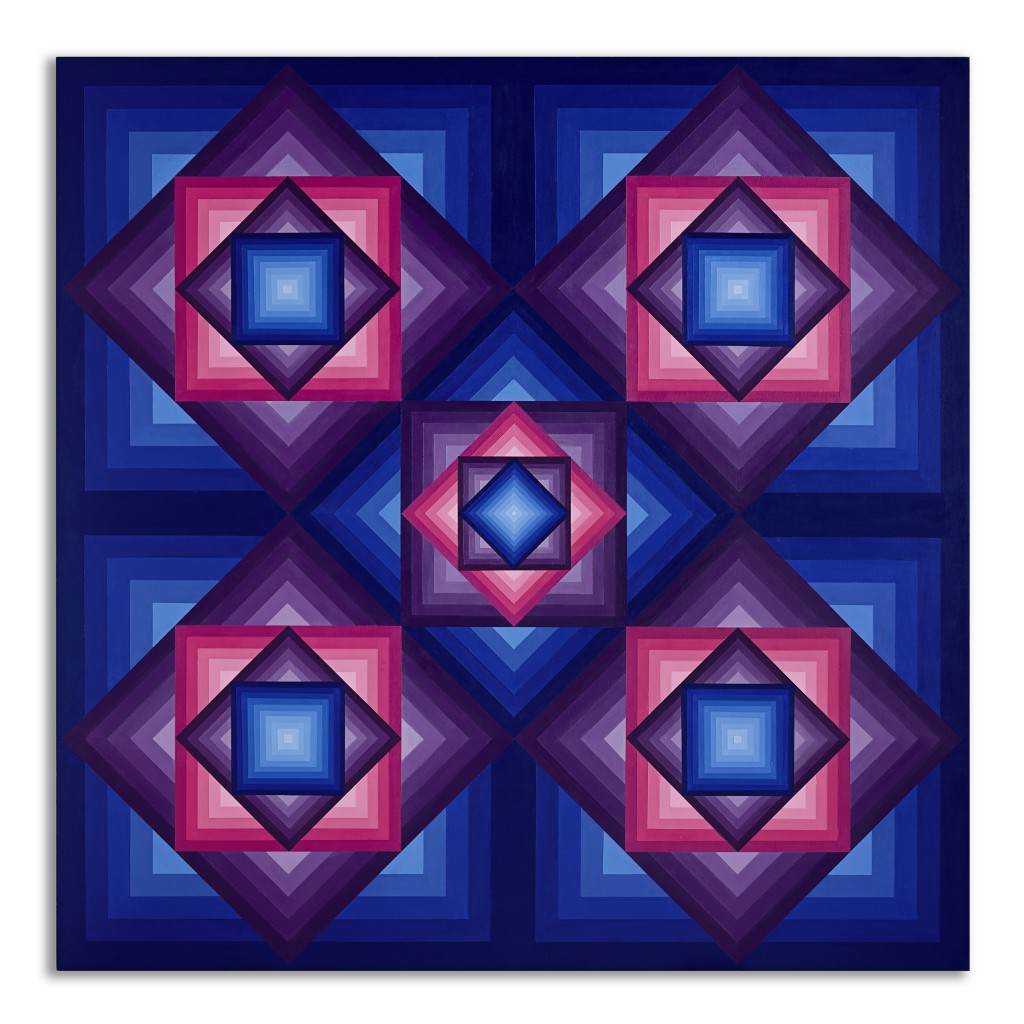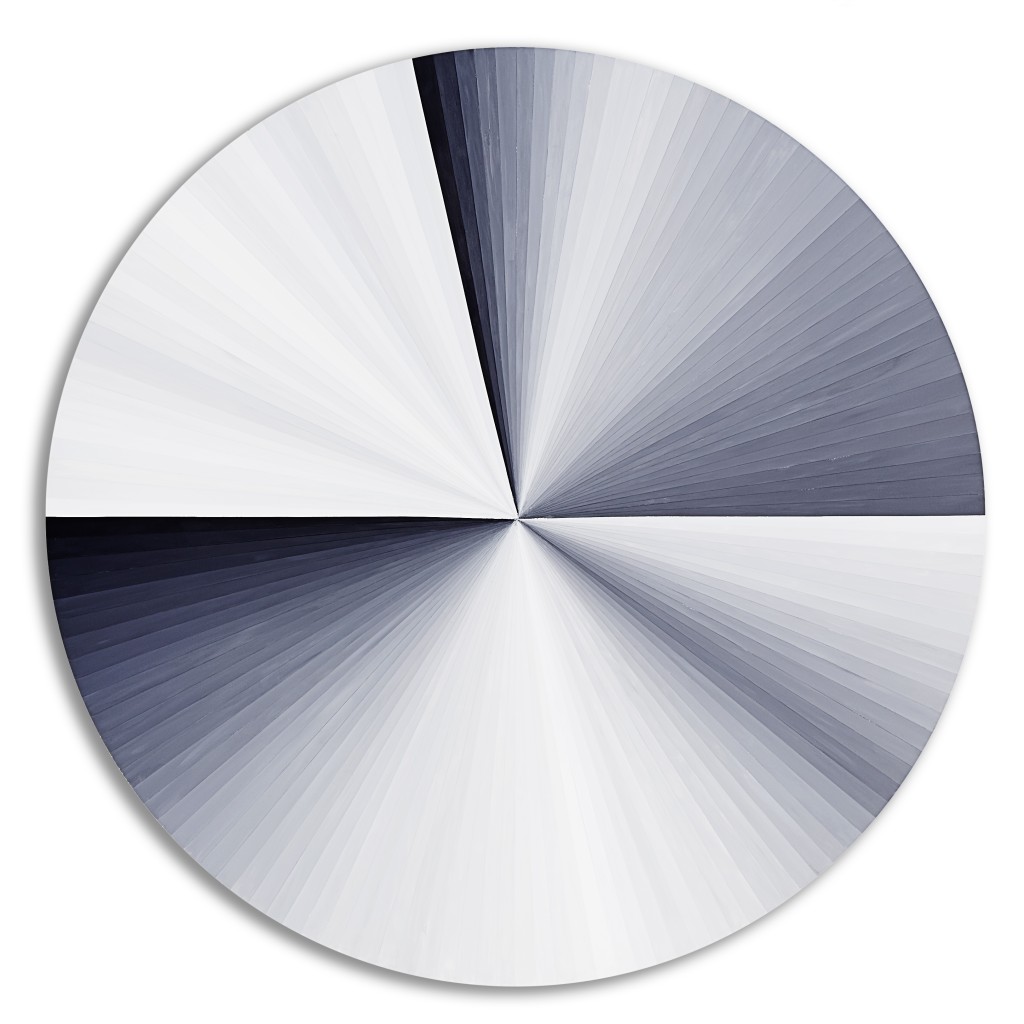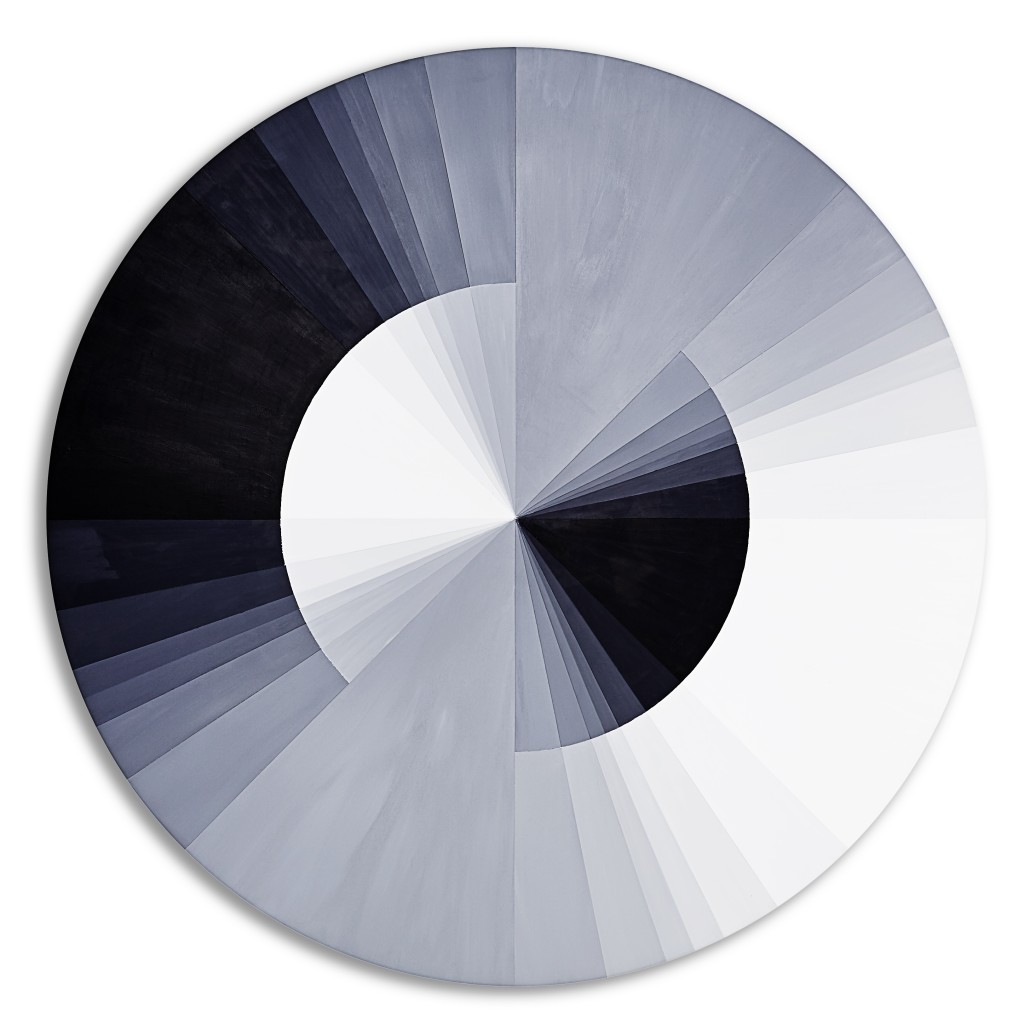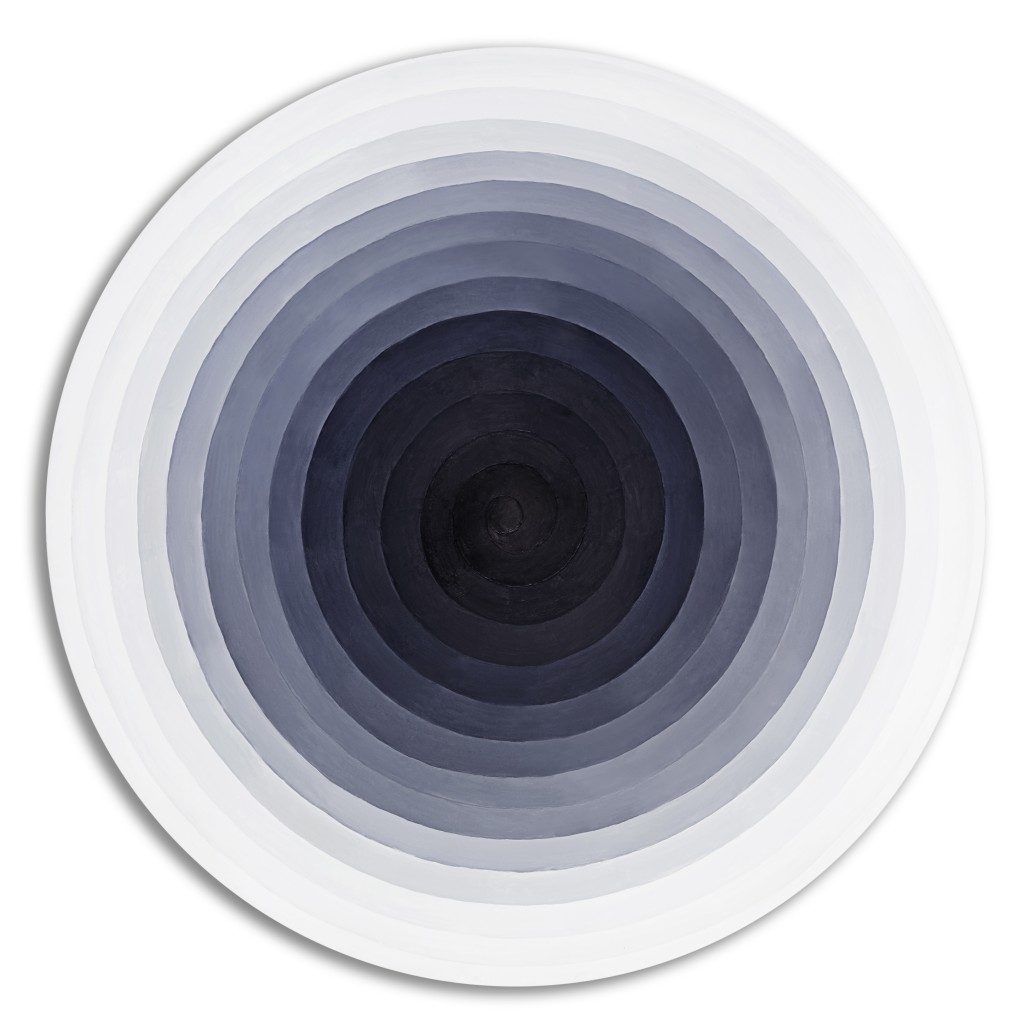“The emotion of beauty is always obscured by the appearance of the object. Therefore the object must be eliminated from the picture.” – Piet Mondrian
The work I have been doing in the past two years relates to the mathematical and geometrical influence on art, patterns in different cultures and the symbolism of geometric shapes and colour in various cultures, concentrating on European and Asian culture. As I started exploring the topic, African artist Esther Mahlangu and Indian artist S.H. Raza stood out to me and inspired me, as they both use simple geometric shapes, bright colours, symmetry and patterns. Furthermore, the cultural context and meaning behind Mandalas, Islamic tile works and Chinese colour symbolism provided me with a new understanding of how simple shapes, when put together in a more complex pattern, can create a both meaningful and visually outstanding piece of art.
By then investigating artist and art movements from my own culture, Europe, I tried to my perspective to my work by combining different cultures. Artist who particularly interested me were Piet Mondrian, whose exhibition in Hamburg I visited, Josef Albers and Richard Anuskiewicz, as their works were even simpler than any of the art I had seen in my previous studies. All three of them saw it as their artistic philosophy to make colour the focal element of their work, extracting everything except for the simplest shapes, to really make it stand out. Anuskiewicz, who belonged to the Op Art movement, furthermore tried to create visual illusions through the use of depth created through colour, which I attempted to do in many of my works.
What fascinated me most during the process of creating my pieces was, how easily the eye could be tricked into believing false reality through nothing more than the use of tone.
_______
Parsons Challenge:
“How did it get so late so soon? It’s night before it’s afternoon. December is here before its June. My goodness how the time has flewn. How did it get so late so soon?” – Dr. Seuss
Days
Time, though often overlooked and underrated, is one of the most precious possessions one can have. No matter what, time will keep on running, as it is infinite and unstoppable. Our whole day, our daily routines, are based on time, represented by the clock.
I chose to look at the clock as my object usually overlooked in our daily environment, because I believe it defines our life. As I am doing my IB right now, time is one of the most important elements of my life, my best friend and my biggest enemy.
Depending on the time of the day, I feel different emotions, which can be portrayed through different tones. My sleep, for example, are the most valuable five to six hours of my day, together with my one hour workout and the 40 minute lunch break. These are the times when I can let go of the school pressure surrounding me and can concentrate only on myself and my well-being. It is a time that I relate to the colour white, as it is considered tranquillizing and is often related to peace, in my case peace of mind.
This work represents the tones of my day, structured like a clock, with 24 hours instead of 12. It is an infinite circle, as days are followed by days, time goes on and days repeat themselves. The hours I spend studying before I go to sleep and right when I wake up are probably the most challenging times for me, portrayed though the use of a dark gray.
Years
Similar to days, years are infinite, as one year is followed by another, no matter what. The four seasons of the year repeat like a mathematical sequence, unstoppable like time itself.
I tried to display a clock of the year in this piece, focusing on the four seasons and the transformations from one to the other. As seasons vary and are sometimes completely opposing depending on whether your country is located in the Northern or Southern Hemisphere, I chose to display both perspectives, showing how two completely contrasting seasons can take place at the same time.
Even though the first association to winter might be the colour white for many, as snow and ice are both coloured white, I link winter to black, due to the coldness and the dark mornings and afternoons. Summer, however, is bright and warm, setting a completely different atmosphere.
The reason I chose to work with only white and black, together with various tones of gray, is the German association of time to the colour gray, established by one of the most popular children’s novel “Momo” by Michael Ende. It describes the story of a little girl called Momo, who tries to fight the “gray man” that are stealing people’s time. It is a story that I have grown up with and that has highly influenced my way of thinking about time.
Life
Different from the two infinite units of time I tried to portray in my first two pieces, in the third one I attempted to display the clock of life, a finite unit of time. I believe we only have one life on earth as human beings, with a definite beginning and end to it, since there has not yet been an immortal human being.
When we are born, we are young and innocent, free of any sins. The only problems and challenges we have to face, are figuring out what to wish for Christmas, or who to play with in Kindergarten. Looking at the colour symbolism of white, all these characteristics can be found again. Furthermore, when looking ahead, time seems infinite and the range of possibilities wide, as there is still so much waiting in the future.
However, as we grow up, our life becomes more challenging, problems become harder to solve. Suddenly, we have to take care of ourselves, make sure we have enough money to pay the rent at the end of the month. We start to sin every now and then, making mistakes and slowly loosing our innocence. Suddenly, we can see an end to our life, we realise how we are getting older, how our body and mind are changing. Our life suddenly feels narrower, with not much ahead of us accept for death. Finally, there is the end to our finite life: Death. Different from the emotions felt during our early years, these responses to the passing of time can be represented by dark grays, with our last action, our last breath, symbolised by the colour black.
